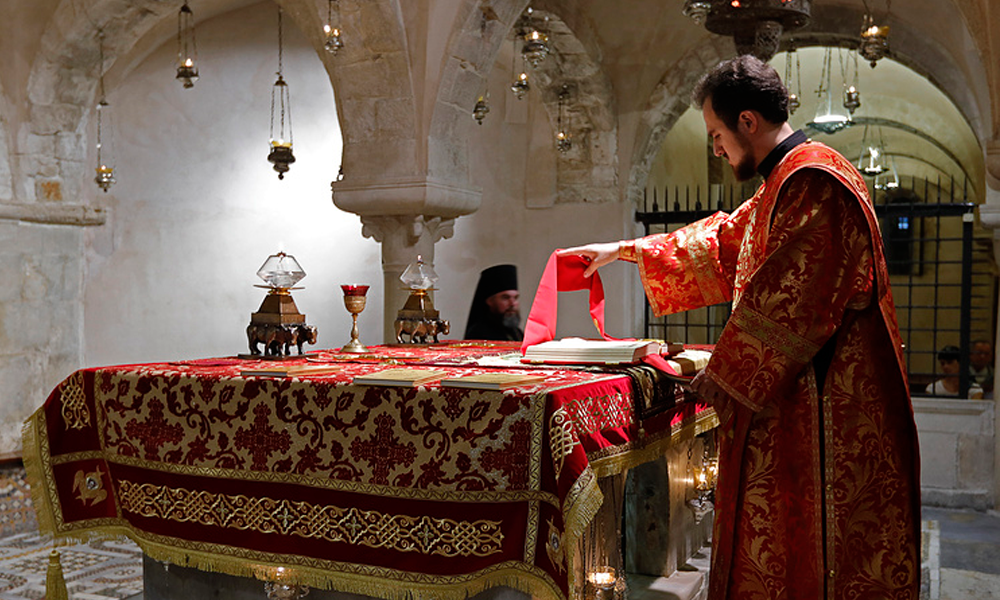About what preceded this unique event and how Moscow is preparing to meet the relic – in the TASS material
A fragment of relics of St Nicholas the Wonderworker, who passed away more than 1,700 years ago, will be transported from in the Italian city of Bari to the Christ the Savior Cathedral in Moscow. For the first time in almost thousand years Orthodox believers in Russia will be able to venerate one of the most important Saints, without leaving their country.
Nicholas the Wonderworker: patron of travelers and beloved magician
St. Nicholas, called by the people Nicholas the Wonderworker and St. Nicholas, is revered in the Orthodox, Catholic, Lutheran and Anglican churches. He was born in the 3rd century in the seaside town of Patara in Lycia, on the outskirts of the Byzantine Empire. Nicholas was brought up by rich and noble parents.
In his youth he moved with his family to the port city of Myra, where he lived his whole life. Nicholas did miracles during his lifetime: he saved the drowning sailors, healed the sick, helped the poor, was cordial and merciful to those around him. That is why he was called the Wonderworker.
One of the most revered saints he became the patron saint of seamen, travelers and children. It is no coincidence that the saint served as a prototype of modern Santa Claus.
Relics of the Saint
In 1087, the relics of the Saint were moved from Myra in Lycia (now Turkey) to Bari, Italy.
Since then, thousands of pilgrims from all over Russia come here. About 20 years ago Orthodox believers were allowed to conduct an Orthodox service directly in the crypt (underground part) of the Catholic basilica.
On considering how great the love of Russians for Nicholas the Wonderworker is, as well as the difficulty and high cost of pilgrimage to Italy, at their historic meeting in Havana in 2016, Patriarch of Moscow and All Russia Kirill and head of the Catholic Church Pope Francis made a fateful decision. After 930 years on the Italian soil part of the relics will be separated and brought to Russia, so that every believer could touch it.
Earlier in an interview with TASS Dr. Francesco Introna, the director of the Institute of Forensic and Insurance Medicine at Bari University, said that the way to reach the relics is highly complicated and the fact makes the retrieval of the fragment a really unique operation.
“The crypt is located below sea level and the relics brought to Bari in the 11th century rest under three stone slabs installed back at the time of deposition of the saint there,” Dr. Introna said. “Piercing the slabs are several small holes that make it possible to collect the holy moisture the relics exude. The rite of collecting it takes place annually on May 9 (the day on which the Italian merchants brought the relics to Bari in 1087 – TASS).”
“The slabs were removed only on one occasion, in 1953, but were then put back to their original places,” the expert said. “The fragment that will be taken to Russia was retrieved exactly through the holes in the slabs.”
Sources say the fragment is the ninth left rib. Many point out the highly emblematic character of his choice because of the rib’s close location to the region of the heart.
Dr. Introna said, however, the decision on what fragment to retrieve was taken right on the spot during the works.
“We didn’t know what specifically we could take out of there,” he said. “We made the decision right on the spot. The holes 6 centimeters in diameter provide the only access to the relics. We needed laparoscopic equipment that is used in healthcare now for this job.”
The team in charge of the operation invited a professional surgeon to help them.
“Along with it, we had to reach down to the depth of almost one meter – something that never happens during regular laparoscopic surgical procedures,” Dr. Introna said. “First we examined the bones with the aid of a microscopic video camera and then selected the rib in a hope it would get through the hole and wouldn’t be damaged along the way.”
“This is the biggest relic that we could retrieve,” he said.
At the next stage, the rib will be placed into a special reliquary delivered from Russia, in which will be put up for veneration by the believers in the Cathedral of the Savior in Moscow as of May 22.
On May 22, the Russian Orthodox Church marks the Spring Day of St Nicholas. It also has a winter day of veneration of the saint, which falls on December 19.
